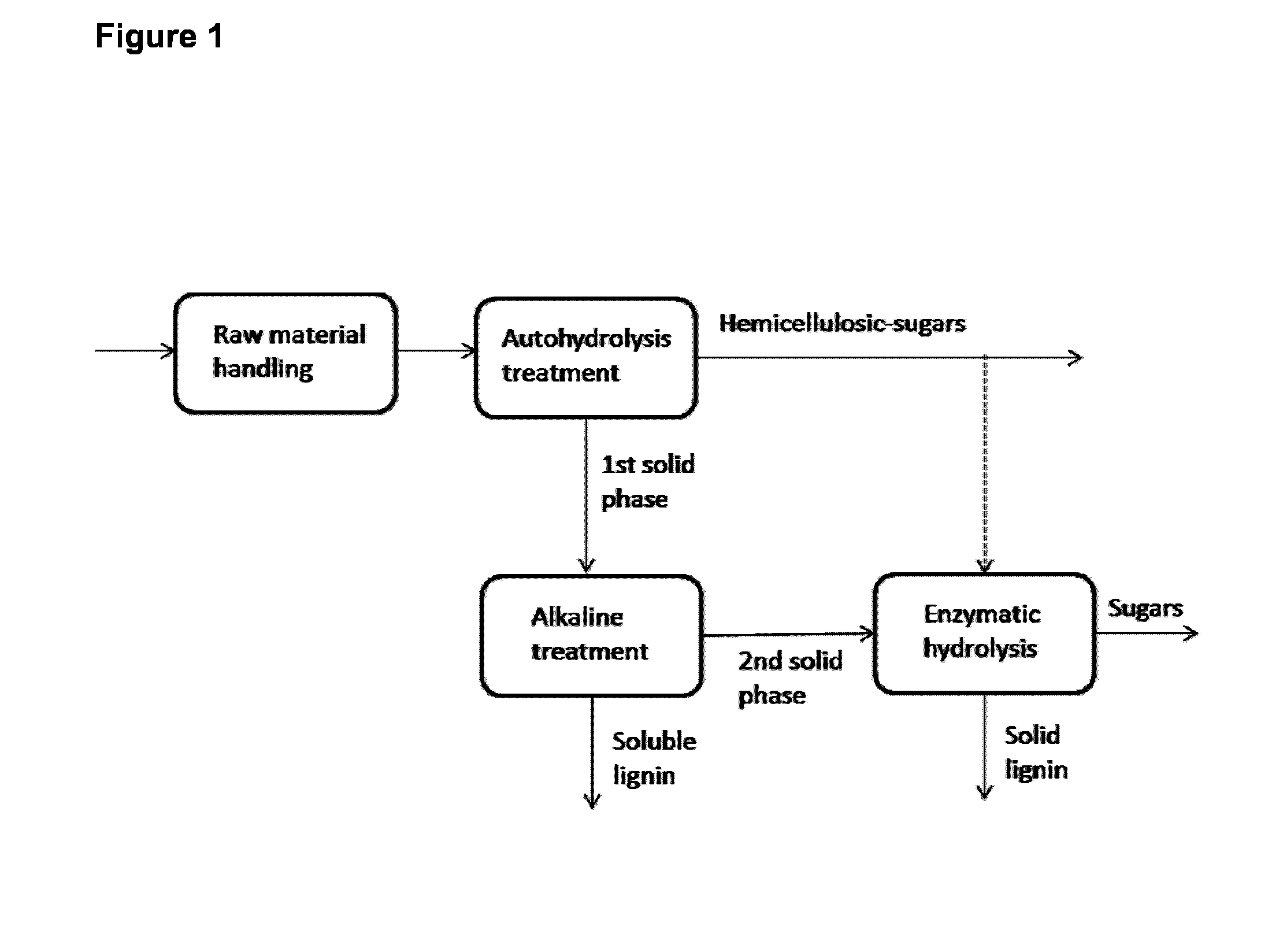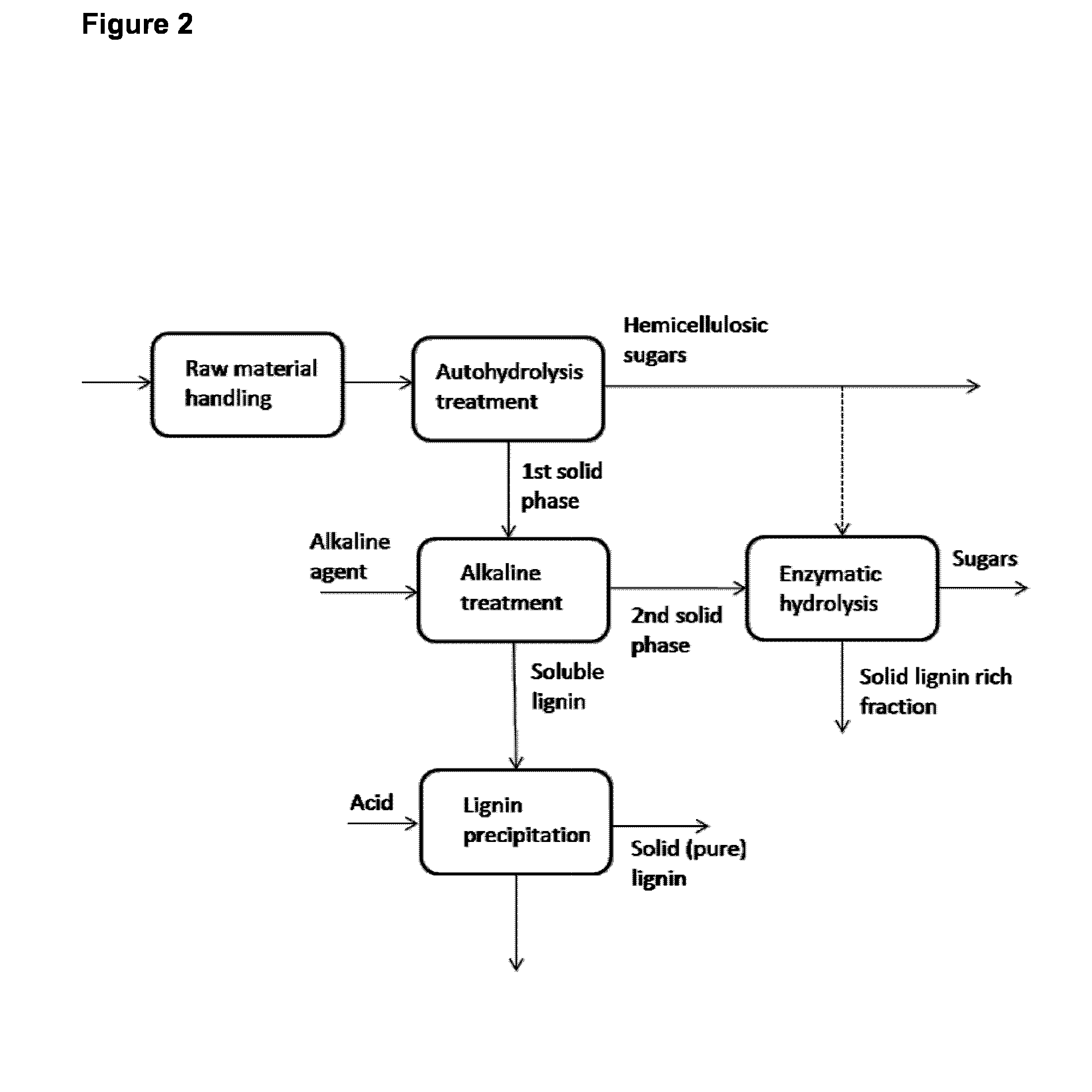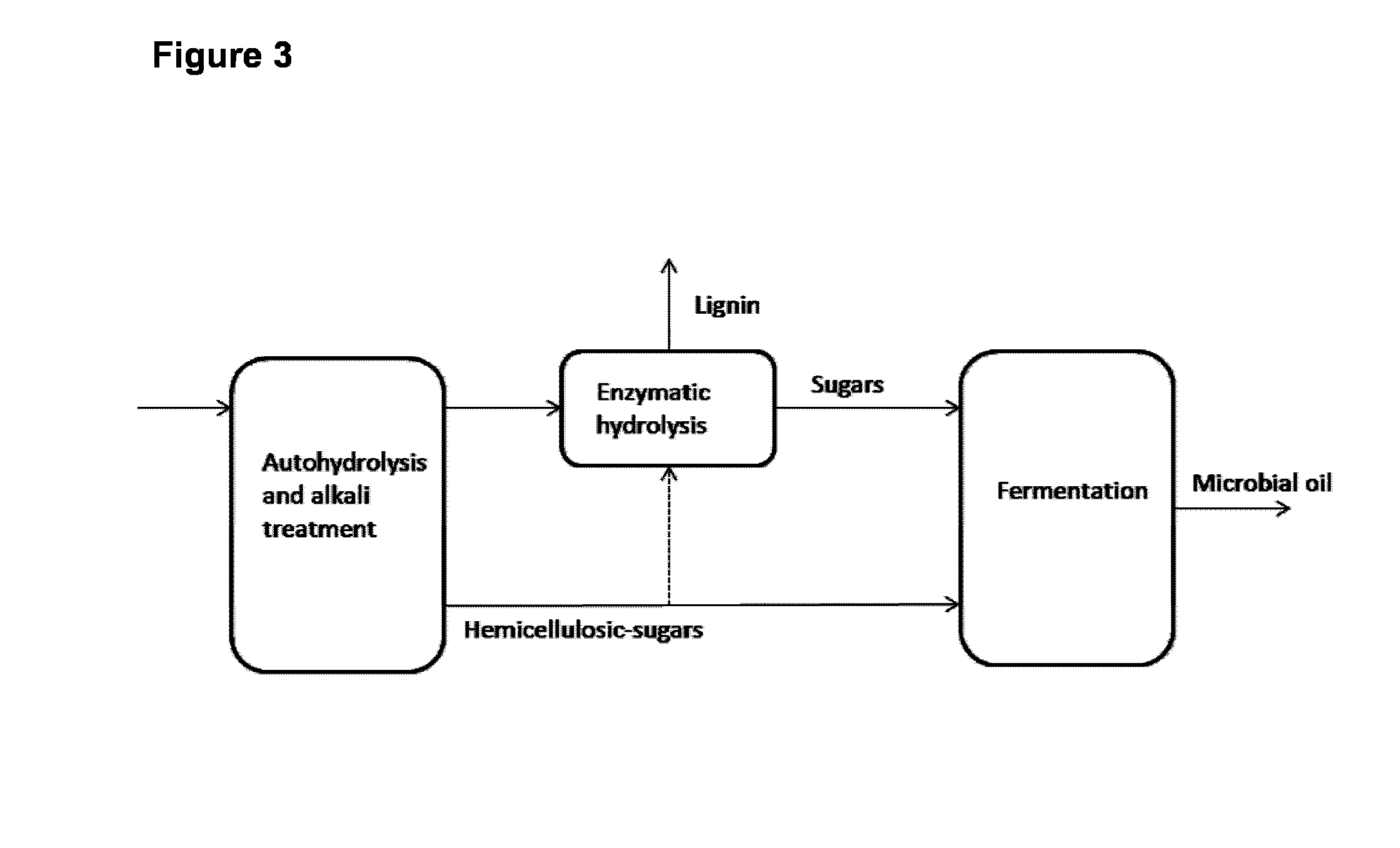Method of processing lignocellulosic material using an alkaline delignification agent
a technology of lignocellulosic material and alkaline delignification agent, which is applied in the direction of biofuels, fermentation, etc., can solve the problems of toxic to the microorganisms used in the fermentation process, complexity of lignocellulose material and its resistance to biodegradation, etc., and achieve the effect of reducing consumption
- Summary
- Abstract
- Description
- Claims
- Application Information
AI Technical Summary
Benefits of technology
Problems solved by technology
Method used
Image
Examples
example 1
Autohydrolysis (with Pre-Adjusted pH) of Wheat Straw
[0202]A suspension was prepared by mixing 20 g wheat straw previously milled to pass a 1 mm screen and 180 g water. The suspension was adjusted with acetic acid to pH 4.5. The suspension was transferred into an autoclave reactor that was then non-isothermally heated up with a heating jacket to temperature between 170° C. and 200° C. with continuous stirring. The temperature data during the heating was recorded and used to calculate autohydrolysis severity (Eq. 1). The reactor was cooled to approximately 50 C, and the suspension was manually recovered for filtration. The liquid fraction was separated from the solid fraction and furfural and hydroxymethyl furfural (HMF) in the liquid fraction were measured using HPLC. Total concentration of sugar (g / l) in the liquid fraction was determined after dilute acid hydrolysis that converts oligomeric and polymeric sugars into monosaccharides. The solid fraction was washed with water (0.5 dm3...
example 2
[0205]A suspension was prepared by mixing 33.8 kg chopped wheat straw containing 11% moisture with 350 kg of tap water giving consistency of 8.5%. The suspension was heated up to approximately 60° C., and the liquid fraction separated from the solids by filtration in an agitated Nutsche Filter. The solid fraction (31.2 kg dry matter) was mixed with water to give 192.4 kg of suspension at 5% consistency. The suspension was heated to 180° C. and cooled down to room temperature giving severity of S=4.15. The solid fraction was separated from the liquid fraction in a decanter centrifuge. The solid fraction was washed with water, and the washed insoluble fraction “autohydrolysed straw” (15.3 kg dry matter) was recovered using the decanter centrifuge and stored in freezer. Based on HPLC analysis, the liquid fraction (6.3 kg dry matter) contained hemicellulose-derived sugars approximately half of its dry matter.
[0206]The example shows that autohydrolysis enables separation of hemicellulosi...
example 3
[0209]A suspension was prepared by mixing 10.5 kg of milled straw at 7.3% moisture and 54.1 kg of tap water in a 100 dm3 container. After storing at room temperature for 18 h, 64.2 kg of the suspension was weighed into a horizontal cylindrical 250 dm3 stirred autoclave reactor. The reactor was closed and heated within 75 min to 140° C., maintained at 140° C. for 5 h and cooled to room temperature within 30 min. The hydrothermally treated suspension was removed from the reactor, and liquid and solid fractions were separated by filtration. The solid fraction was washed with tap water and pressed using a hydro-press. The pressed solid fraction (20.9 kg) had 42.7% dry matter content.
[0210]The solid fraction produced from this experiment was used subsequently in the delignification tests, which resulted in solid fraction with low lignin and high carbohydrate content.
Delignification of Autohydrolyzed Straw
[0211]Autohydrolysed straw contains considerable amounts of lignin that causes inhib...
PUM
| Property | Measurement | Unit |
|---|---|---|
| temperatures | aaaaa | aaaaa |
| temperatures | aaaaa | aaaaa |
| temperatures | aaaaa | aaaaa |
Abstract
Description
Claims
Application Information
 Login to View More
Login to View More - R&D
- Intellectual Property
- Life Sciences
- Materials
- Tech Scout
- Unparalleled Data Quality
- Higher Quality Content
- 60% Fewer Hallucinations
Browse by: Latest US Patents, China's latest patents, Technical Efficacy Thesaurus, Application Domain, Technology Topic, Popular Technical Reports.
© 2025 PatSnap. All rights reserved.Legal|Privacy policy|Modern Slavery Act Transparency Statement|Sitemap|About US| Contact US: help@patsnap.com



